
People usually associate lobster with fine dining and fancy living. However, there’s more to lobsters than just being an expensive item on the menu. Dive deep into their secrets and know more about these animals with these lobster facts.
- Lobsters have 5 pairs of legs and 3 claws.
- A lobster’s first pair of claws always grows bigger than the rest of its claws.
- Lobsters can live between 45 and 50 years.
- Lobsters measure between 25 to 50 cm long.
- The largest lobster ever caught weighed an estimated 20 kg.
- The first lobsters appeared 360 million years ago.
- The oldest known lobster fossils go back to the Cretaceous Period, around 140 million years ago.
- Native Americans became the first people to eat lobster as food in pre-colonial times.
- The Native Americans also used lobster meat as fertilizer for their crops.
- Europeans first encountered the lobster during the colonization of America in the 16th Century.
- Fishermen invented special tanks in the 18th Century to carry lobsters around.
- Until special tools became available in the 19th Century, fishermen caught lobsters by hand.
- Lobsters were so plentiful that until the 19th Century, lobster meat was actually seen as a poor man’s food.
- Restaurants in Boston and New York first began marketing lobsters as a delicacy in the 1880s.
- Lobsters became rationed in World War Two because of their status as a delicacy.
- Lobsters have fewer calories than even chicken breasts.
- Lobsters have rich amounts of omega-3 fatty acids, as well as potassium.
- Other nutrients in lobster include Vitamins B-6, B-12, and E.
- Lobsters have their brains in their throats.
- Lobsters favor 1 front claw over the other, making them either right or left-clawed.
Lobsters can drown.
Despite crawling and swimming in the oceans for most of their lives, lobsters can still drown. Once you put a lobster in freshwater, the change in salinity will cause their bodies to fail. As they to balance the high salt content by absorbing more water, their bodies will swell up from the inside. The lobster itself won’t burst, but it will die from internal damage. Isn’t that one for gruesome lobster facts?
Lobsters can spend a limited amount of time outside of the water.
Like most aquatic animals, lobsters filter oxygen from the water using their gills to breathe. When outside of the water, they will quickly suffocate if not kept moist. So far, the longest a lobster has lived outside of the water was 36 hours with constant moisture.
Lobsters aren’t insects.
This misconception comes from how they’re sometimes called bugs. Although their exoskeleton and legs may suggest similarities, insects and lobsters differ completely from each other. For one, lobsters have 10 legs, while insects always have 6 legs. Simply put, lobsters have their own unique evolutionary tree, completely separate from insect species.
Most lobsters have symmetrical bodies.
Unlike humans, each side of a lobster’s body mirrors each other. However, some lobsters may develop a bigger dominant claw to adapt to its environment.
A lobster’s claws can exert a lot of pressure.
According to scientists, a lobster claw can exert up to 100 psi of pressure. If you have a hard time visualizing this, the normal pressure for house plumbing is between 30 and 80 psi. That said, the whole system may be prone to damage at 100 psi. Similarly, lobsters use their strong claws to crack open the shells of their prey such as crabs and other shellfish. How’s that for neat lobster facts?
Lobsters can cut off their own limbs.
It may sound strange, but lobsters usually do this when their limbs get stuck and keep the lobster from moving. If it doesn’t cut the limb off, then the lobster will not only stay trapped but will eventually starve to death where it is.
No one knows why lobsters drop off their limbs.
If the thought of lobsters severing their own limbs seemed weird enough, you’d have to think again. Over centuries, lobsters have also been observed with their limbs popping off from the joints. To this day, both fishermen and scientists still don’t know why lobsters do this.
Lobsters can grow back lost limbs.
Depending on which parts it lost, lobsters usually regenerate their limbs within months or years. For smaller limbs, a lobster can grow them back in just a few months. For bigger limbs such as their claws, it can take the lobster years to regain them completely.
Lobsters taste with their legs.
If you take a close look at a lobster, you’ll notice small hairs sticking out around their legs. These sensory hairs function much like our tongues, allowing the lobster to taste not just their food, but also their surroundings. Through “tasting” the water they live in, lobsters can track food or detect and avoid disturbances.
Lobster eyes function differently from humans.
While our eyes perceive our surroundings by refracting light, the lobsters’ eyes reflect light. Generally, lobsters only detect motion instead of seeing actual images. using the hairs on their legs to sense their close surroundings. Lobsters also use the eyes on their antennae to identify food or dangers in the distance.
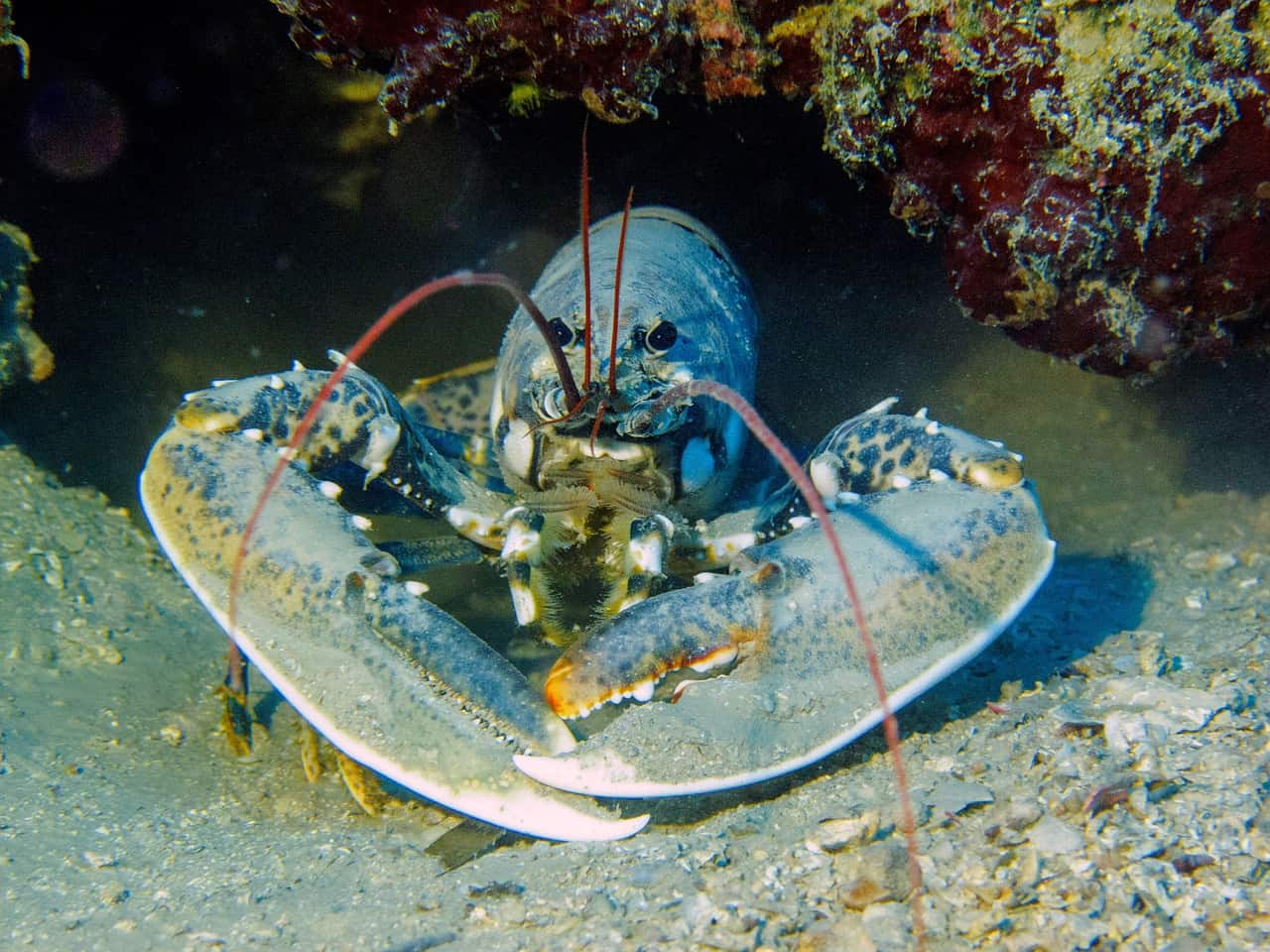
Cutting a lobster’s antennae causes them to molt.
While their shell grows back, lobsters can’t regrow their antennae. Once you damage a lobster’s antennae, they will permanently lose their sense organs. Definitely one of the lobster facts to remember when handling one in real life.
Lobsters urinate from their faces.
Essentially, lobsters urinate through the green spots near their antennae. How’s that for weird lobster facts?
Lobsters urinate on each other’s faces.
Among males, lobsters pee on each other’s faces to establish dominance among each other. Similarly, females urinate on males to signify their willingness to mate. Isn’t that one of the lobster facts that just sound wrong?
Lobsters have blue blood.
Like snails and spiders, lobster blood has hemocyanin – a protein that gives it a distinct blue color. Typically, humans and other vertebrates have the iron-based hemoglobin to carry oxygen in their blood. On the flip side, lobsters and some invertebrates use the copper-based hemocyanin in their blood to carry oxygen.
Living lobsters don’t have a red color.
In fact, they tend to come in dark colors that range from blue-green or greenish-brown to blend into their homes on the seabed. Lobsters only turn red when cooked, as the heat reacts with the astaxanthin in their shells.
A rare few lobsters come in different colors.
Of all special colors, blue is the most common genetic variation. However, lobsters only have a one in 2 million chance of developing a blue coloration. Meanwhile, Albinos are the rarest of them all, with white or translucent or even cotton candy-like shells. Only 1 lobster out of 100 million can develop albinism. How’s that for neat lobster facts?
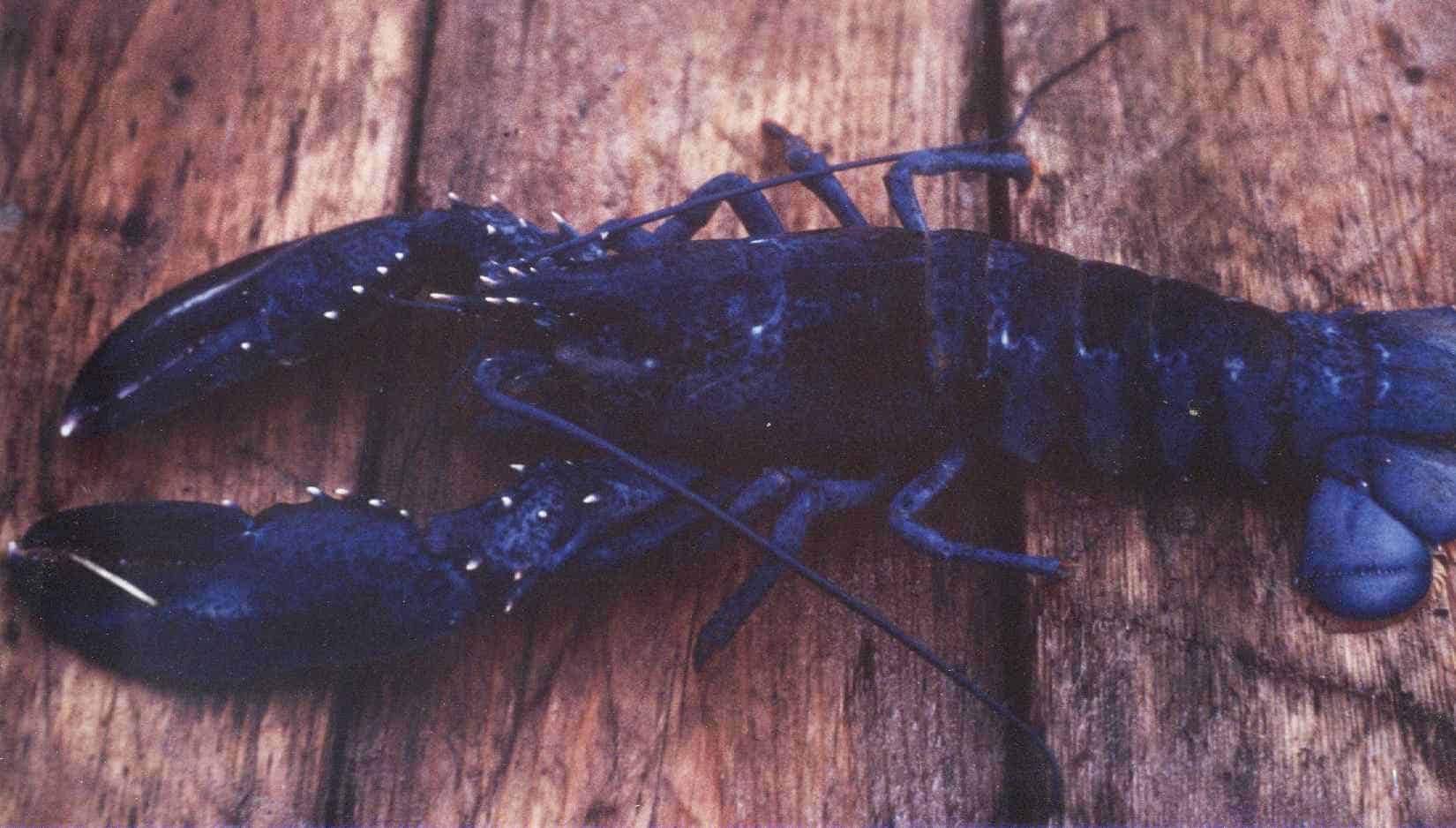
A museum in the USA has an exhibit of lobsters in many different colors.
The New England Aquarium in Boston, Massachusetts features an exhibit called the Lobster Rainbow. As the name suggests, this installment displays both common and rare lobster colors for the public.
New England is especially suitable as a habitat for lobsters.
Due to the region’s rocky terrain, lobsters make a perfect home out of New England’s coastal areas.
Molting can get dangerous for lobsters.
Lobsters use up a lot of energy to successfully molt, which places a high amount of stress on them. Scientists estimated that between 10 to 15% of young lobsters actually die from exhaustion during molting.
Similarly, older lobsters lose the strength to molt successfully, eventually dying as their exoskeleton rots or collapses around them. Definitely one of the sadder lobster facts.
Lobsters never stop growing.
Technically, a lobster only stops growing once they are unable to molt. As long as lobsters can regenerate shells that can house their bigger bodies, they will continue growing.
Lobsters have bands that show how old they are.
In 2012, scientists discovered that like tree rings, a lobster’s bands can show its age. You can find these bands on the lobsters’ antennae and in their stomachs.
You can easily tell male and female lobsters from each other.
Under their tails, lobsters have swimmerets or small limbs that help them navigate. Males have slender and hard swimmerets, while females have flattened or feathery swimmerets. Females also tend to have bigger tails than males, since they carry their eggs in their tails.
Lobsters share the same gender names as chickens.
Specifically, fishermen call male lobsters cocks. Of course, they call female lobsters hens. Interestingly, they also call lobsters weighing between 0.4 to 0.6 kg as ‘chickens’.
Fishermen also use other terms when referring to lobsters.
Typically, the term ‘select’ refers to lobsters weighing between 0.6 to 1.4 kg. If a lobster is heavier than this range, they would be called ‘jumbos.’ Meanwhile, injured lobsters are called culls because they typically sell cheaper than healthy lobsters. Finally, fishermen call lobsters with no claws as ‘pistols’.
Female lobsters get ready to mate once they molt.
When a female lobster molts its shell, she also releases a chemical that signals male lobsters that she’s ready to lay her eggs. This chemical draws them to her, in order to fertilize her eggs.
Female lobsters can lay up to 12,000 eggs at a time, sometimes fathered by multiple lobsters. Female lobsters can mate with many males before laying their eggs, each of whom only fertilizes a random number of eggs.
Female lobsters can choose when to fertilize their eggs.
Just because they’ve mated with a male, doesn’t mean the eggs immediately get fertilized. A female lobster has the ability to store a male’s sperm in her body, and may choose when to fertilize her eggs.
Lobsters start molting while still in their eggs.
Inside their eggs, lobsters actually molt no less than 6 times before hatching. Once they hatch, the larvae only measure about 1/4th of an inch. Upon hatching, they float around and feed on plankton until they’re big enough to sink to the bottom of the sea.
Lobsters suffer from high infant mortality.
Female lobsters might lay over 10,000 eggs at a time, but most of those younglings don’t live long after hatching. Prior to hatching, fish also tend to feed on lobster eggs. Aside form being prey, hatchlings may also struggle adapting to their environment. In total, scientists estimate that only 0.1% of all lobster hatchlings manage to live for more than 6 weeks.
Lobsters usually lay their eggs from July to August.
On average, lobster eggs take almost a year to hatch. Usually, eggs hatch between May to June in the following year.
Some female lobsters get protection from getting caught.
Sometimes, fishermen mark female lobsters by carving a notch into its tail. Usually, it takes 2 seasons for the notch to disappear. This practice called V-notching keeps other fishermen from catching breeder lobsters.
Lobsters eat both plants and other animals.
While lobster may eat seaweed, the actually prefer to eat live prey such as fish, mollusks, worms, and other shellfish. In extreme cases, they may also scavenge for meals left by other predators. Interestingly, lobsters have also been observed eating their molten skin. 
Photo by Flyingdream from Wikipedia
Eating their own shells has benefits for lobsters.
Their shells have plenty of calcium, which the lobster gets back when they eat their old shell. This additional calcium also helps their new shells grow and harden faster than they otherwise would. How’s that for sustainable lobster facts?
Lobsters sometimes suffer from shell rot.
Shellfish like crabs and lobsters are prone to diseases that damage their shells. As the name implies, the disease infects their shells and can cause holes to grow in their shells.
Lobsters keep their teeth in their stomachs.
It’s a unique enough feature that scientists named it the gastric mill. You can find this chamber in their stomach, averaging around the size of a walnut.
Captured lobsters often eat each other.
This is actually why fishermen take the effort to tie up a lobster’s claws, keeping them from attacking and eating each other. Scientists still aren’t sure why, but caught lobsters kept in tanks try to each other. Whether or not they also eat each other in the wild continues to be debated by scientists. How’s that for weird lobster facts?
Striped bass primarily prey on lobsters.
The striped bass comes from the Atlantic Ocean, the same as most lobsters. Growing up to 90 cm long, and weighing up to 31 kg, these fish can swallow lobsters whole in a single gulp.
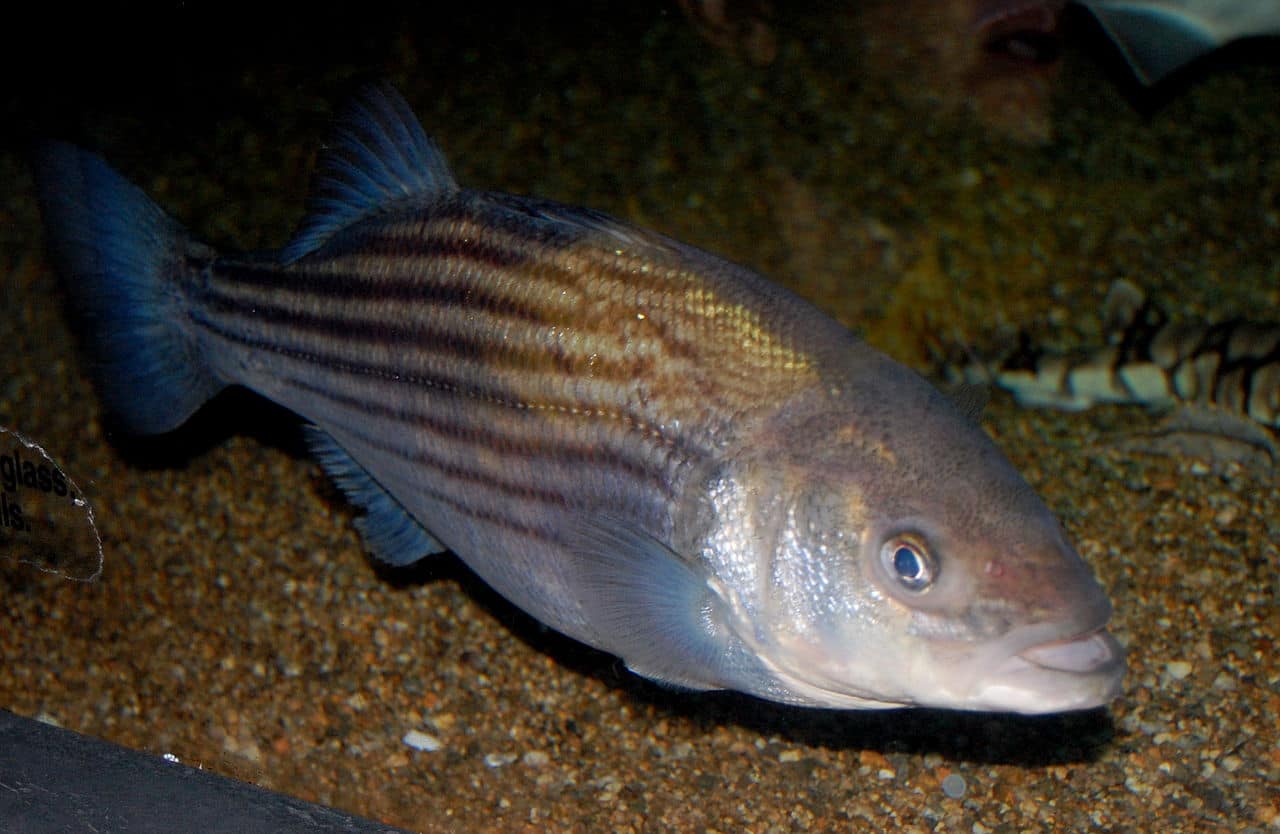
Other predators of the lobster include codfish and the octopus.
You’re probably surprised to hear that octopus prey on the lobster. After all, with their soft bodies, the octopus doesn’t seem a threat to lobster. However, octopuses have beaks that can punch through solid steel. Their soft bodies also actually give them an edge against lobsters, letting them absorb the force of a lobster fighting back.
Lobsters usually walk on the ocean floor.
Though they move generally slowly, lobsters can be quick when the situation calls for it. They can escape sticky situations by folding their legs and claws against their own bodies and propelling themselves backward using their tails. Similar to how shrimps move, lobsters can navigate up to 5 meters per second using this method.
Lobsters can walk for up to 370 km.
The longest known distance a lobster has walked in a single trip reached almost 229.91 miles. Scientists believe that a slight change in the water temperature caused it the lobster to travel such a distance.
Lobsters sometimes walk holding claws with each other.
Scientists still aren’t sure why they do it, though. Like human parents, cases of lobster handholding usually involves older lobster guiding a younger lobster along. Now that’s one for cute lobster facts.
Fishermen always release part of their catch back into the sea.
Usually, fishermen would release small lobsters to give them the chance to grow and fetch a bigger price in the future. The fishermen also tend to release the largest lobsters in their catch, giving them a chance to breed and maintain a strong and healthy lobster population.
In Maine, USA, the standard size of what’s kept in the catch lies between 8.26 cm and 12.7 cm. Anything smaller or bigger than this range is usually released back into the sea.
It takes time for a lobster to grow to the size fishermen keep.
It takes around 7 years for a lobster to grow into the regular catch size. In that time, they could die from the environment or get killed by their natural predators. This is also why the lobster industry is strictly regulated, to preserve the ecological balance of their numbers.
Fishermen also return wounded lobsters into the sea.
If they don’t, it’s likely the lobster would die by the time they get to shore, effectively rendering it useless. Instead, they give it a chance to recover in the sea for future catches.
Fishermen catch many different kinds of lobster during lobster season.
The lobster season lasts for 4 months, from July in summer to October in autumn. The big, clawed shellfish that most people think of when they hear lobster is actually the American variety. Other varieties include the especially spiny lobsters from the Mediterranean Sea, and which have most of their meat in their tails. There’s also the scampi, small lobsters which resemble shrimp, and even crayfish, distant relatives of the lobster.
Lobster traps come in either metal or wood.
They come coated in plastic, though, to keep metal from rusting or wood from rotting. However, the door usually comes in a woven, biodegradable mesh that keeps lobsters from being permanently trapped in forgotten traps. Usually, fishermen put white meat as a bait inside the trap to draw lobsters in. Once a lobster goes inside, the trap springs closed.
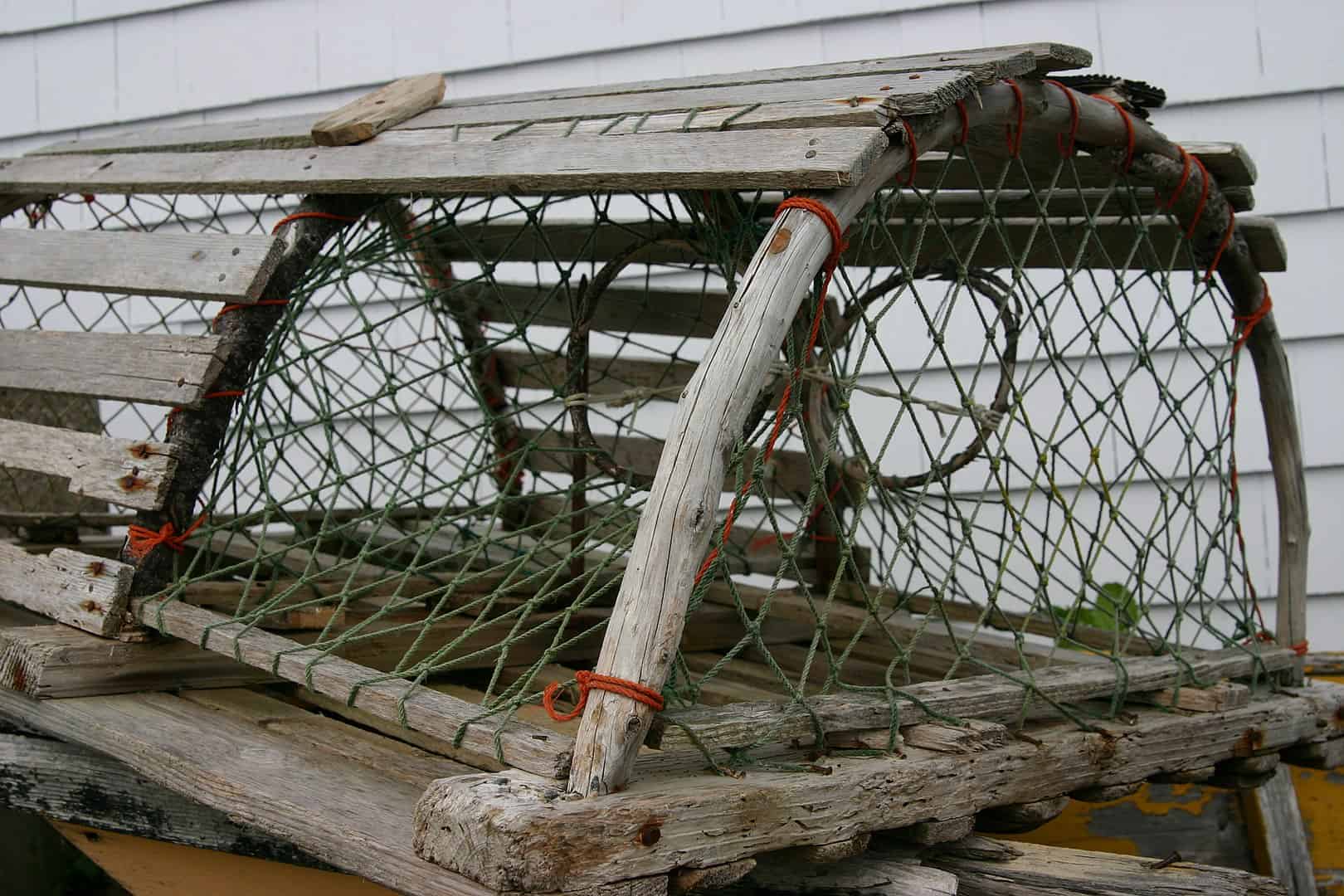
Lobster traps have a line connecting them to a buoy on the surface.
This marks their location for their owner, and also marks them as the private property of said owner. The buoy also lets the owner draw up the trap to check on them, and to remove any lobsters inside. Usually, fishermen check on their traps once a week, adding more bait as needed.
Some states place limits on how many traps a single fisherman can have at a time.
These limits vary from state to state, of course. Even with these regulations, fishermen can place up to 800 traps at a time.
Lobster traps are very inefficient.
Only 10% of lobsters actually go inside a trap, and of those only 6% get caught. Despite the inefficiency of the trap, fishermen have shown no want to improve them. To them, the trap’s inefficiency keeps them from overfishing lobsters and ensures their livelihood for the future.
Lobsters actually see lobster traps as a convenient source of food.
Scientists have observed individual lobsters getting territorial on traps near them. Lobsters have been observed fighting fish, shellfish, and other lobsters to keep them from getting at the food inside.
Hunting lobsters by hand can get very dangerous.
Since they have powerful claws, you could lose fingers or even your whole hand if you attempt to catch lobsters by hand. That said, it’s not impossible, and actually common among amateur fishermen.
Even professionals take lobsters out of traps with their hands. You just have to wear heavy, protective gloves to keep your fingers and hands safe from a lobster’s claws. Now there’s one of the lobster facts to remember before you decide to mess with one in real life.
Some people go lobster fishing at night.
Naturally, they use flashlights of various kinds to help them spot and catch lobsters in the dark. Some argue this makes it very unfair for the lobster, but it isn’t actually illegal. That said, some places limit the number of lobsters a person can catch with this method to just 7 lobsters a night.
Not all places require a license for a person to catch a lobster.
In Hawaii, for example, you only need a license to sell lobsters on the market. If you catch lobsters for your own dinner table, then you don’t need a license for it. It’s also the same in Maryland, USA.
It takes a long time to become a professional lobster fisherman.
On average, global regulations require a minimum of 2 years of apprenticeship under a licensed fisherman before anyone can apply for a license of their own. Even then, it’s not uncommon for apprentices to find themselves on waiting lists for up to 10 years before getting their licenses.
In some places, a professional lobster fisherman has to die first, with a new license only getting issued by the authorities to an apprentice in order to replace the fisherman that died. How’s that for dark lobster facts?
Lobster fishing is big business.
Every year, the lobster industry earns an estimated $300 million in the USA alone.
Lobster fishermen can get very territorial.
Well, no one wants to see someone else catch what they could have caught and sold. Also, there’s a practical reason why lobster fishermen don’t like others working in their waters. Specifically, too many traps in one area can cause their lines to tangle with each other. This makes for a tricky mess that could take time and money to untangle.
You don’t have to be a professional fisherman to profit from the lobster industry.
Even working on a lobster fishing boat brings in plenty of money for ordinary crewmen. It’s hard and even dangerous work, but it’s very financially rewarding. On average, crewmen on lobster fishing boats can earn up to $50,000 in a single year.
Being a lobster fisherman can get expensive.
If you don’t own your boat, you have to pay the owner a certain percentage for it. And even if you do own your boat, you still have to pay for bait, fuel, and maintenance among other things. On average, a lobster fisherman needs to catch at least 70 kg of lobsters a day just to make up for their operating costs.
Catching lobsters professionally can take the whole day.
Usually, a shift catching lobsters starts at around 4 in the morning and ends well into the night.
The US law prohibits stealing from another person’s lobster traps.
In the US, stealing from another person’s lobster traps can get you charged not just with petty theft or robbery, but an outright felony.
You can catch other fish with a lobster trap.
They swim in and get trapped just as easily as lobsters do when they walk in. Fishes that can get caught in traps include cod, flounder, and mackerel among others.
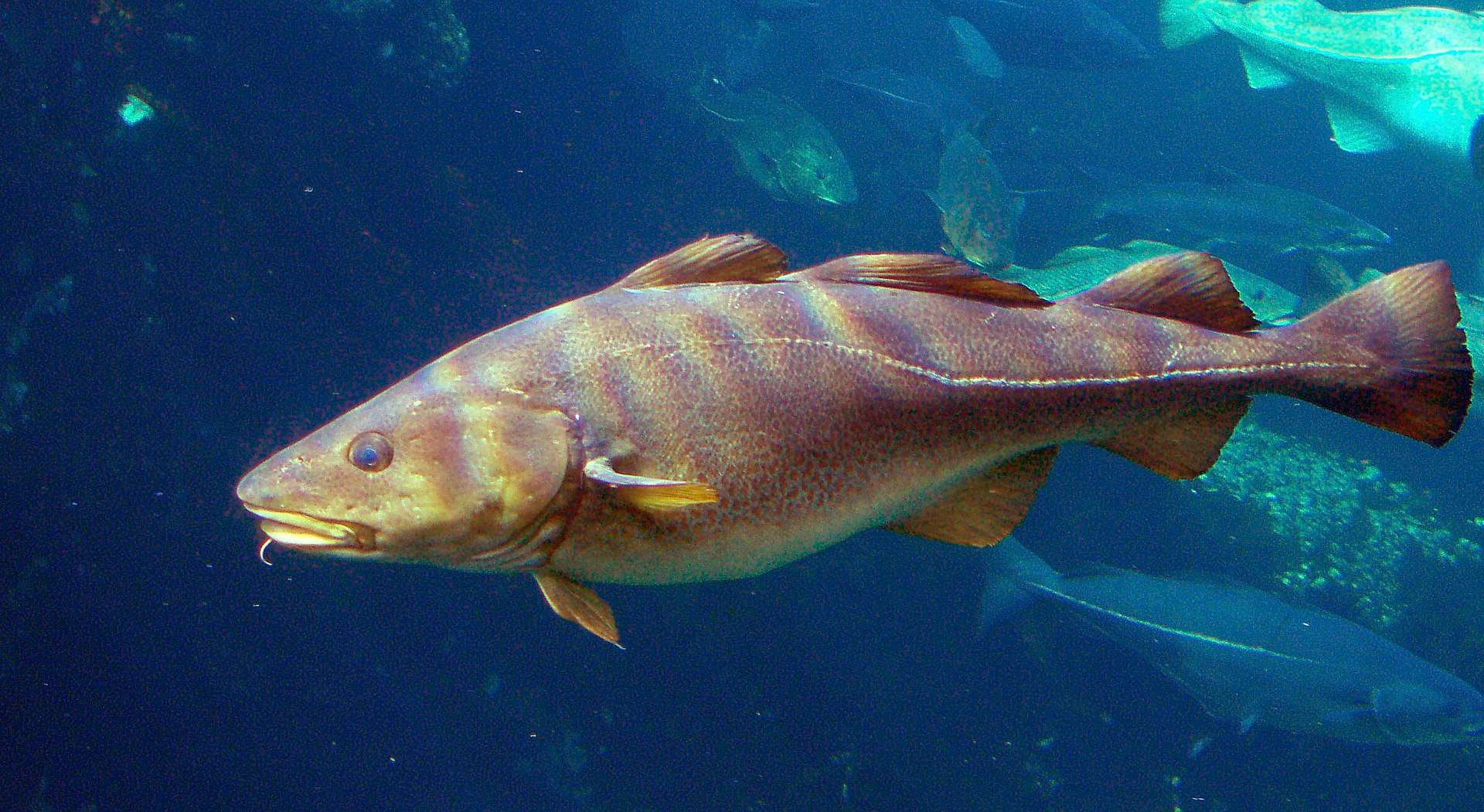
It’s illegal to catch lobsters with nets.
In Maine, USA, you can get fined up to $1000 for catching lobsters with nets. Scuba divers must also get a separate license to catch lobsters, and even then only local residents can get those licenses.
The law gives allowances for fishermen who accidentally catch lobsters with their nets.
To avail this compensation, fishermen simply have to release the lobsters back into the sea. If they bring them back to land, they will be subject to legal action.
Farming lobsters is an experiment in progress.
Lobster aquaculture goes back to the year 2000, and so far has only found limited success. Thus far, two main factors limit lobster farming, For one thing, lobsters have an unexplained tendency to eat each other in confined spaces. Secondly, the slow population growth of the species makes it impractical to breed them.
Soft-shelled lobsters have a reputation for sweeter, more tender meat than other kinds of lobster.
Despite the name, they’re not actually a special breed of lobster. They’re actually just lobsters caught or cooked after they molt, but before they grow a new shell. These lobsters are also called shedders.
Lobsters come in 3 kinds for cooking.
New-shelled lobsters or shedders are very delicate, only surviving short distances. This makes them somewhat rare and only locally available. Meanwhile, hard-shell lobsters can survive greater distances, which makes them a popular choice for restaurants and other commercial establishments.
Finally, the old-shell lobsters taste coarser than other lobsters. However, they’re the most expensive, as the sturdiness of their shells means they can survive transport all the way around the world.
You usually have to cook lobsters alive.
Once lobsters die, their flesh rots quickly and produces high amounts of ammonia which makes it poisonous. Consuming ammonia can actually rot your organs from the inside out. This makes it crucial to cook lobsters while they’re still alive, so their flesh wouldn’t get the chance to rot.
Lobsters might seem dead or dying on arrival in the kitchen.
When you take lobsters out of saltwater, they will behave almost lethargically as they’re essentially suffocating. You can only see if they’re alive or not once you cook them. A living lobster will curl its tail under its body when falling into boiling water. However, if the lobster remains unresponsive at this point, you may want to reconsider eating it.
Lobsters don’t scream when they’re cooked.
Although you may have heard it somewhere, this is just a popular myth coming from popular fiction or animal rights activists. For one thing, lobsters don’t have vocal cords, so they can’t scream in the first place. And for another thing, some sources actually argue that lobster nervous systems are too primitive to process pain the way more evolved animals can.
The screaming when lobsters cook comes from their shells.
Though lobsters do make sounds upon boiling, it’s literally just steam escaping from the lobster’s shell. You know how a kettle whistles when the water inside it boils? That’s also where the ‘screaming’ comes from when cooking lobsters alive.
Freezing lobsters removes the need to cook them alive.
Using this method, a lobster has to be frozen deeply and quickly to keep its flesh from rotting. Preserving lobsters this way also requires you to cook them straight from the freezer, as letting them melt first causes their flesh to rot at once.
Some countries actually ban cooking lobsters alive.
In Switzerland, lobsters must be killed or stunned before cooking. Stabbing through the brain is the preferred way of killing a lobster just before cooking, while electrocution is the most common way of stunning them.
Lobsters most commonly get cooked either through boiling or steaming.
They’re also sometimes served alongside another kind of meat, usually beef. In the USA, this is what’s called surf and turf, with the beef usually in the form of a steak. It’s a popular dish in steakhouses across the country, with some considering it an especially expensive menu item. It does, after all, combine 2 expensive food items into a single dish.
Surf and turf lost popularity in the 1920s.
At the time, it became a cliche, with people avoiding the combination altogether. However, surf and turf made a comeback in the 1960s that lasts until the present day. In fact, starting in the 1970s, surf and turf became symbolic of middle-class prosperity, as part of the so-called continental cuisine.
Lobster Newburg is another example of a lobster recipe.
In 1870, this dish first appeared on menus in New York City. Sea captain Ben Wenberg first served the dish at a Delmonico’s Restaurant, using butter, Cayenne pepper, cognac, cream, eggs, lobster, and sherry as ingredients.
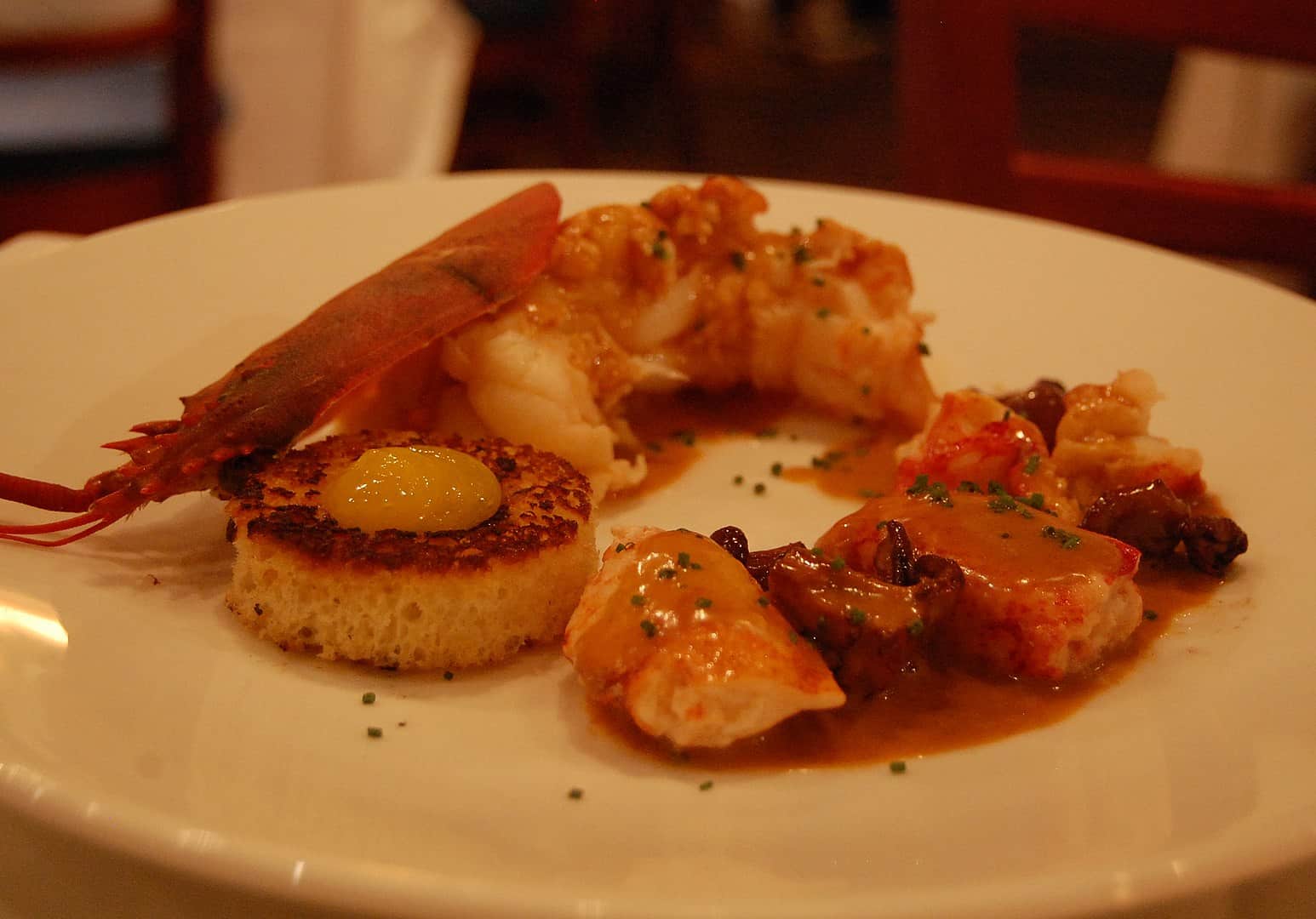
Lobster Thermidor is another lobster recipe related to Lobster Newberg.
Unlike Lobster Newberg, Lobster Thermidor came from France. Its ingredients include brandy, egg yolks, and lobster.
Bisque is a French soup that doesn’t actually use lobster meat.
At least, it’s not part of the finished product. Instead, the soup used strained lobster broth as the base, with other ingredients added in. Also, other shellfish such as crab and shrimp can substitute for lobster when making bisque.

Lobster rolls make up 1 of the most popular lobster recipes in the world.
They originally came from New England and Canada and spread out to the rest of the world from there. Simply put, lobster rolls involve serving lobster meat in a hotdog bun that opens to the top, instead of the side.
The most popular seasonings include butter or mayonnaise, along with black pepper, lemon juice, and salt. Lobster rolls also usually come served with fries on the side.
Cappon magro is an Italian dish that can include lobsters as part of the recipe.
As with bisque, you can use any kind of shellfish for the recipe. The lobster gets served with vegetables on top of a base made from hard bread. Vegetables usually included in the recipe include cucumbers, lettuce, peppers, and tomatoes. Other ingredients include hard-boiled eggs and olive oil.
Cooking lobsters for too long causes their flesh to turn rubbery.
How long you should cook depends on how you plan to cook them, and how heavy the lobster is. For example, a lobster weighing 1 kg should only boil for 13 minutes to keep its flesh soft and tasty. For steaming, a lobster of the same weight should only steam for at most 14 minutes to get the same result. Any longer, and you’d have a potential choking hazard on your plate.
The lobster's antenna can indicate whether it's cooked or not.
The antenna of a cooked lobster should pop clean off. If it resists popping off, then the lobster needs more time to cook properly. Alternatively, you can just insert a kitchen thermometer into the lobster’s tail. A cooked lobster should have an internal temperature between 57 to 60°C.
Some chefs argue that steaming is much better than boiling when it comes to cooking lobster.
First of all, steaming leaves the flesh more tender compared to boiling. It also preserves the fresh, ocean-like taste of the lobster’s flesh. They also claim it makes the flesh less soggy when eating. Finally, steaming a lobster makes for a cleaner kitchen compared to boiling a lobster.
Boiling a lobster has its advantages too.
Diners actually find it easier to crack a boiled lobster’s shell compared to a steamed lobster. The lobster also cooks more evenly, as boiling completely submerges a lobster. In contrast, steamed lobsters have their bodies exposed to varying amounts of steam while cooking.
You can actually cook a lobster in a microwave.
It’s not exactly fine dining, though, but it’s quick and easy for people with small kitchens. Depending on the recipe, a 1 kg lobster needs around 10 minutes in a microwave at full power to cook. The microwave literally steams the lobster cooked inside its own shell, using its own body’s fluids. That said, it’s best to microwave lobsters 1 at a time to cook them evenly. Definitely one of the lobster facts you’d be curious to test out yourself.
You shouldn’t leave cooked lobster in a refrigerator for too long.
Since it’s cooked, it won’t spoil or rot the way a dead lobster would. But even so, the longest you should keep cooked lobster in a refrigerator is 4 days. Any longer and the meat starts to go stale. If you want to keep it longer, then you should just put it in the freezer.
All lobsters taste the same.
Both scientists and chefs agree that the color of the shell doesn’t change the taste of the lobster meat once cooked. It also doesn’t change the nutritional value of the meat, nor does make it dangerous in any way. Lobsters shells also always turn red when cooked, regardless of the lobster’s color in life.
Don’t worry if you see something green or red in your lobster meat.
The green is actually just their tomalley, an organ that works like intestines, liver, and pancreas all in one. Meanwhile, red usually indicates unlaid eggs. Both substances are perfectly safe to eat.
A lobster’s legs have meat too.
Technically, lobsters have meat all over their bodies – not just the big and meaty claws, but the thin and spiny legs as well. You can try cracking them open, but it’s easier to literally just suck the meat out of them.
Some people believe lobster meat has the effect of an aphrodisiac.
However, no food has been scientifically proven to stimulate human reproductive organs thus far.
Lobsters naturally contain small amounts of mercury in their flesh.
It’s no reason to worry, though. The ocean contains very small amounts of mercury dissolved in the water, from the erosion of land on the shores and underwater. On average, your typical lobster only has 0.11 ppm of mercury, which is well below the maximum safe amount of 1 ppm. Unless an industrial accident happens nearby that contaminates the sea, you don’t need to worry about the mercury in your lobster.

Lobsters have plenty of protein but only small amounts of fat.
On average, a single lobster has 28 grams of protein in its flesh, with only 2 grams of fat. In fact, you get more fat from adding butter to lobster than you’d get by eating the lobster as is. How’s that for healthy lobster facts?
Certain religions ban eating of lobster.
For one, Judaism bans eating shellfish in general. Meanwhile, Islam in general doesn’t ban the eating of shellfish, but some specific sects does prohibit it.
Lobsters shells can get recycled into golf balls.
A professor from the University of Maine noticed how lobsters shells only end up rotting in landfills, so he came up with an idea to get more use out of them. In addition, he expected it to make more money for the lobster industry. As a result, he used cleaned lobster shells as raw material to make cores for golf balls, making their biodegradable nature a selling point.
This feature makes them very suitable for golf courses on cruise ships or near bodies of water like lakes, rivers, and the sea. That said, the lighter weight of cores made from lobster shells degraded their performance by about 30%. This, unfortunately, made them unsuitable for high-end tournaments like the US Open.
You can keep lobsters as pets.
Whether or not you need a license to keep them as pets depends on where you live. If you decide to keep a lobster as a pet, just remember that they’re not the friendliest of animals. You’ll also need a saltwater tank, or you’ll find yourself stuck with a dead lobster soon.
France and Brazil once had a dispute over lobsters.
Between 1961 and 1963, an argument sparked over whether lobsters crawl or swim, and how those related to deep water fishing regulations. Brazil eventually resolved the issue by simply expanding its border at sea to keep French fishing ships away from the lobsters.
Lobsters are in no danger as a species of extinction.
Despite the threat of industrialization, lobsters aren’t endangered anymore. The speed and numbers they can breed in, plus their delicacy status, actually helps keep lobster populations big and healthy.
Pollution is a main threat to lobsters.
Pollution especially threatens lobsters and their habitats, as it introduces industrial chemicals and waste into the water. These might not necessarily kill the lobster, but contaminates their flesh with the same chemicals and waste. When raw sewage gets dumped into the water, bacteria can contaminate and colonize a lobster’s flesh. This is definitely one of the more concerning lobster facts we nee to pay attention to.

Global warming is an especially dangerous threat to lobsters.
The way global warming heats up the ocean threatens lobsters despite the speed and number of their population growth. In particular, scientists fear that a 5-degree increase in ocean temperature by 2100 could cause a total population collapse for lobsters.
A character in the popular cartoon series Spongebob Squarepants is a lobster.
In one episode, Larry the Lobster gets turned into a realistic lobster, shown molting and then eating his own shell.
You can find the world’s largest lobster in China.
However, you probably wouldn’t be able to taste it anytime soon – as it’s a lobster statue. Built in 2015, it stands 18 meters high in the city of Qianjiang, Hubei Province, China and weighs an estimated 100 tons.
Was this page helpful?
Our commitment to delivering trustworthy and engaging content is at the heart of what we do. Each fact on our site is contributed by real users like you, bringing a wealth of diverse insights and information. To ensure the highest standards of accuracy and reliability, our dedicated editors meticulously review each submission. This process guarantees that the facts we share are not only fascinating but also credible. Trust in our commitment to quality and authenticity as you explore and learn with us.
